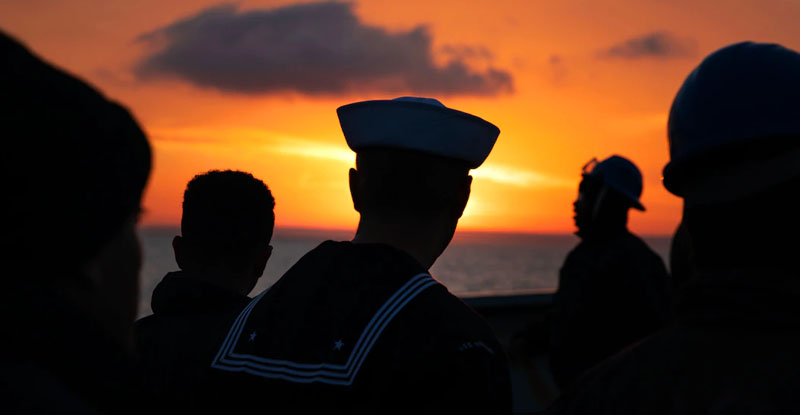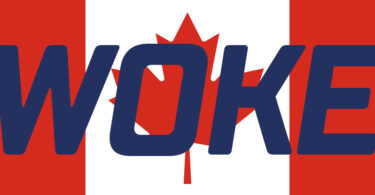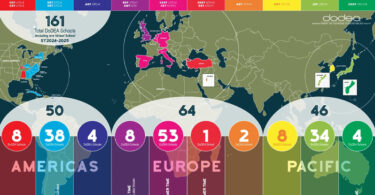By Capt. Brent Ramsey, USN (ret)
STARRS VP for Opertaions
On 30 June 2020, the Chief of Naval Operations established Task Force One Navy (TF1N) to address racism in the ranks. Questions abound about why the CNO issued this order.
1. Is there evidence to support the notion that the Navy has a serious racism problem?
2. Do public records reveal a racism problem in the form of increasing racism incident and investigation reports, analysis of disparate advancement rates by race, large numbers of blacks and hispanics leaving the service early due to experiencing a racist environment, or actual race riots or incidents such as occurred frequently and openly during the Viet Nam era?
3. Is the Task Force justified considering the Navy is significantly over-represented in the enlisted ranks with 19% of the sailors being Black versus 13% in the general population or 146% representation. Hispanic representation in today’s Navy is exactly 18% matching the national demographic. Thus, overall minority representation according to the TF1N report is 43% versus a demographic of 37%, an over-representation of minorities by 6%, hardly an indicator of an institutional racism problem. Pew Institute data reports that the percent of minorities in the military has been steadily rising from 25% in 1990, to 40% in 2015, to 43% today, also an indicator that racism is not a factor attracting and retaining people for our increasingly diverse Armed Forces.
4. Is the Task Force justified simply because public riots and demonstrations and political and media attention since the Floyd death have focused on race? Is the Navy playing politics?
5. Is the Navy’s 8% of Black officers being used as a political tool to advance an internal diversity agenda not connected to readiness? TF1N report shows the Navy has at least 4300 Black officers, a significant number. In recent years that number has been going up steadily. Hispanic officers are similarly under-represented at 9% versus the national demographic of 18% but little attention is paid to that group as all the media attention is focused on alleged systemic racism against blacks. Asian officers at 6% match the national demographic of 6%. Wouldn’t the Asian data point indicate that the low numbers for black and hispanic officers result from different causes than racism? If the Navy were racist wouldn’t all minority groups be under-represented?
6. For the Navy to reach the goal of 13% black officers, an additional 2700 blacks would have to join the officer ranks and 2700 others who have applied would be excluded. Is that justified to meet a seemingly arbitrary goal where the percent in the Navy has to match a national demographic? What science supports this goal?
7. Does increasing Black officer representation in a Navy 340,000 strong, a subtle .8% composition shift, justify TF1N, spending millions of dollars, spending thousands of hours that otherwise could have been used for training, and tying up scarce manpower resources?
8. Is there any proof that the under-representation of blacks and hispanic officers is evidence of systematic racism considering the overrepresentation of minorities in the enlisted ranks? Does the shortage of certain minority officers namely black and hispanic point to different explanations?
9. Is having more black and hispanic officers going to make the Navy more ready, more lethal, more highly skilled? No evidence has been provided that simply increasing the number of minority officers would improve the Navy’s readiness and lethality.
10. There are likely cultural reasons fewer of our black and hispanic citizens seek to serve as officers in the Navy. There is voluminous research that such is the case. Has the Navy ignored evidence that cultural factors explain the shortfalls in the officer ranks?
11. Does the Navy already practice affirmative action, something now embedded for decades in our culture for college admissions, jobs, and small business and other loans? Wouldn’t that mean the Navy is actually over-represented in Black and hispanic officers based on admission standards for whites?
12. Will under-representation result in the Navy lowering its admission standards further to meet the arbitrary goal of having the same percent of black and hispanic officers as is in the general population?
13. Could the reason that there are fewer black and hispanic officers in the Navy than is desired, is that a lower percentage in those populations volunteer who have requisite qualifications for age, fitness, health, weight, drug history, behavior?
14. According to the TF1N report, females represent 20% of both officer and enlisted ranks yet females are over half the US population. Why the emphasis on minorities and not on females?
Conclusion
The implication of the establishment of TF1N is that the Navy has a racism problem that is holding black and hispanic service members back, and that more diversity is necessary for a more effective Navy. Is there evidence this is true? The nature of TF1N’s purpose, its justification, and conclusions will be covered in detail in Part II in the next edition of the STARRS newsletter.
Brent Ramsey is a retired naval officer, writer, and volunteer. His articles/commentary on national defense have appeared at Real Clear Defense, National Defense, the Center for International Maritime Security, United States Naval Institute Proceedings, the Association of the United States Navy, and CD Media.








Leave a Comment